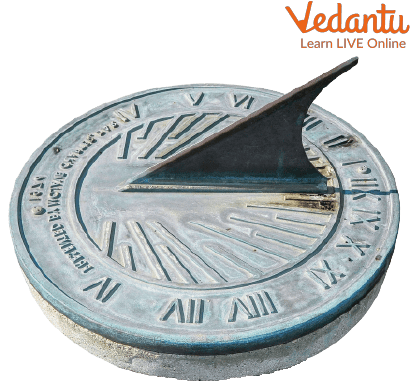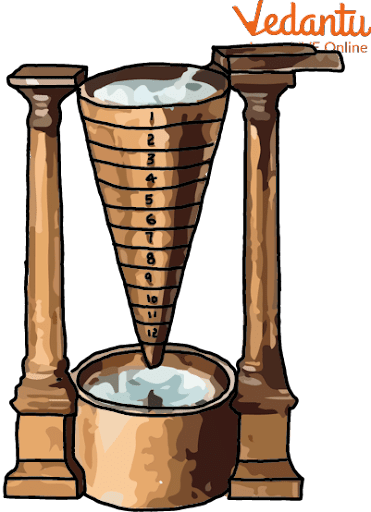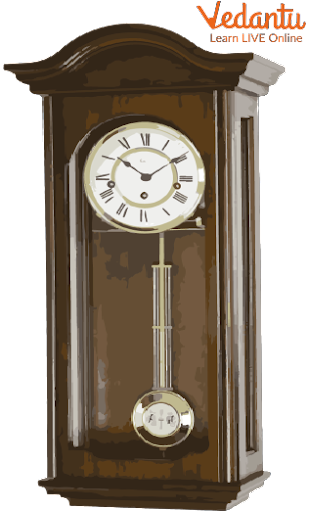




How is Time Measurement Done Through a Clock?
The tool used for measuring time is a clock. Clocks have markings at equal distances on a circular surface. It is divided into 12 parts, and one cycle of the hour hand through those 12 segments is considered half a day. The hour hand goes twice around those 12 segments to complete a day. There are minute hands on a clock as well that go round the segments once to complete an hour. The second hand on a clock goes around those segments to complete a minute.
Measurement of Time
On a clock, the two major hands have different lengths and one end is fixed at the centre of the dial.
The small and wider hand is known as the hour hand.
The longer and thinner hand is the minute hand.
The hour hand moves slower than the minute hand.
The third hand is the second hand, and one round the clock makes it one minute.
The hour hand moves through the dial and completes 12 hours. The hour hand starts from the number 12 and goes across the dial to again reach 12 after completing one round around the clock, and thus one hour is complete. The minute hand completes one round of the dial in 1 hour. The minute hand completes one division in one minute, which is, say, 1 to 2 on the clock. The second hand is not commonly seen, but if a clock has a second hand, it completes a round of the dial in one minute.
The following is the relation between time and seconds:
24 hours = 1 day
60 minutes = 1 hour
60 seconds = 1 minute
How to Measure Time?
Time can be measured by various tools, and many techniques have been adapted over time around the world for measuring time. Some of these are as described below.
Sundial
The oldest method for time measurement was done by the timekeepers in Ancient Egypt and Sumer dated almost 1500 BC. They used the shadow of the sun to determine the time.
It does not require an elaborate arrangement and resources for understanding time. A thin, angled object called a gnomon is used to cast a shadow on markers made on a circular plate indicating the time of the day.

Sundial
Water Clocks
The water clocks in the earliest days were basically stone pots having sloped sides which made the water drip out at a constant rate from a small hole at the base. The pot has markers on the inner side, which denote the different water levels according to the passage of time.
To achieve better accuracy in water clocks, they were mechanised to control the flow of water as constantly as possible. As it involves water, there could be variations due to variations in the temperature of the water, and that could be 30 minutes per day.

Water Clock
Mechanical Clocks
The mechanical clocks were much more accurate as they used gears that released energy in regular intervals using a swinging pendulum. Galileo is known to have invented the pendulum clock and had a very prominent accuracy of less than one minute per day, which he achieved by using a weighted pendulum.
The pendulum would swing at a consistent rate and thus regulate the speed in turning of gears, making it tick at regular intervals. These clocks were the first edition of the modern-day analogue clocks that we have.

Mechanical Clock
Interesting Facts About Time and Clock
Levin Hutchins was the inventor of the infamous alarm clock. He lived in Concord, New Hampshire, in the USA, and he wanted to ensure he would wake up at 4 a.m. to reach work on time.
The oldest mechanical working clock in the entire world is present in Salisbury Cathedral in England.
The term “o’clock” we use for describing time is obtained from the term “of the clock” and is said to come from a 15th-century reference to a mediaeval mechanical clock.
Summary
Time and seconds measurement has been done in various ways through the ages. These techniques of time measurement evolved with every era. Each method of time measurement evolved through ages in order to improve the accuracy of time measurement. Time measurement moved from usage of celestial bodies and their positions to usage of mechanical gears to make it more accurate and reliable. The usage of mechanical clocks made us very less dependent and we could all have our own idea of time.
FAQs on Time Measurement - Introduction to Hours, Minutes and Seconds
1. How can we say 00:00 in English?
For "00:00" we can also say "twelve midnight" and "twelve AM". For "12:05" we could also say "five minute after midnight"
2. How many time zones does India have?
The Republic of India uses only one time zone (even though it spans across two geographical time zones) across the whole nation and all its territories, called Indian Standard Time (IST).
3. What is the full form of IST?
The full form of IST is Indian Standard Time. For India, it is represented as UTC+05:30.











